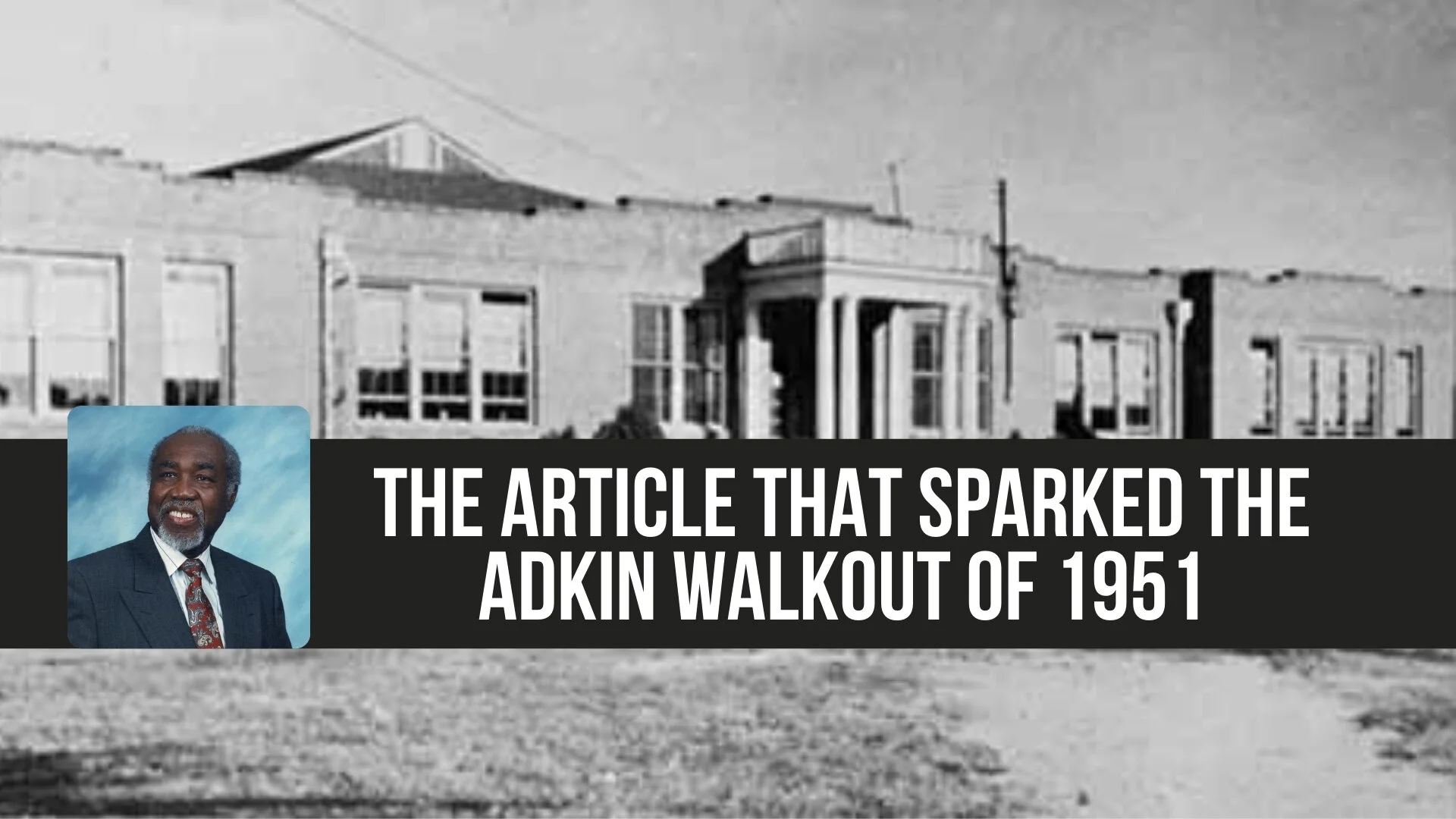Mike Parker: The article that sparked the Adkin Walkout of 1951
John Dudley was one of the organizers of the 1951 Adkin Walkout
This Friday, Nov. 20, marks an important day in the history of the struggle for educational equality in Lenoir County. Sixty-nine years ago on that day, students in grades seven through 12 at Adkin High School walked out and marched to protest inequities foisted upon African-American students.
The march was completely a student-led effort. No parents or teachers even knew what the Adkin students had planned for that day. I had the privilege of speaking with John Dudley, one of the organizers of the walkout, in a Zoom meeting. He shared with me what made the students take action on Tuesday, Nov. 20, 1951.
“This class of ‘52 was sort of a special class because we had been together – about 80 percent of us – from elementary school through high school,” Dudley told me. “When we entered high school, Ms. B.C. Davis became our homeroom teacher throughout high school. She taught civics and social studies.
“Every Wednesday she brought in the Weekly Reader, which had very interesting articles in it. But this particular Wednesday, Nov. 14, she brought in the Weekly Reader, and the topic was what an ideal school has. We read the article about what an ideal school has, and we began to look around at each other.
“We asked Ms. Davis: ‘Is there a school in this area that has those things?’ She said, ‘Yes, Grainger High School up on the hill has them.’ So we asked her, ‘What probably could students do. And she said, most times they would strike.
“From that point on, we asked Ms. Davis to leave the room. That article turned us on because we knew we did not have any of those things listed in the article.”
Some of the deficiencies the Adkins seniors noticed included an old student-built barn used for a gym, no provisions for home economics classes, and poorly equipped shop classes. Students in science classes shared a single microscope. Lack of classroom space was also an issue.
“Some classes met in the auditorium; some in the library; some in the cafeteria. We needed more classroom space and a home economics room – and a new shop,” he said.
The physical plant that housed the school was also inferior.
“Every time Adkin Creek would flood, it would flood our campus,” Dudley said. The building was also marred by broken windows that were never replaced.
The senior class was composed of students in Class A and Class B. Some seniors were also in shop classes.
“The idea of the march started in Classroom A. We were considered college preparatory. So we began to look around at each other and said, ‘Look. What can we do?’ So Classroom A chose a committee to strategize and come up with a plan,” Dudley explained. Five students were chosen to go to the Board of Education and present the concerns of Adkin students.
“Fredrick Thompson was Senior Class President, so he was chosen. I was student body vice president, and Carolyn Coefield was the secretary. Thomas Lawson and Calvin Thompson were also among the five.
“We in Class A strategized the whole thing. We thought we should bring the other senior class and the president of the junior class in to help us organize.”
The students called the school board to find out when they met. The board had a meeting scheduled for Monday, Nov. 19, so the students asked if they could speak to the board. The board met at Grainger High School.
“We went to the board – I think it was 7 or 7:30 when they met – and we announced ourselves,” Dudley said. “They asked if we could wait a few minutes. We waited about five minutes, and then they invited us in the room. We had everything all typed up – the eight different things that we were concerned about.”
“We gave the board the eight things we were proposing and asking them for. Five members of the board were in the room,” Dudley said. One read the document and then passed the sheet to another board member until all had read the proposal. “Then they asked us to leave the room for a minute. We left. We were out of the room about 10 minutes. They invited us back in.
“‘Who sent you?’ they asked.
“‘No one sent us,’ we said.
“‘What adults sent you?’ they insisted.
“‘No one sent us.’ That was hard for them to believe.
“We had strategized from Wednesday, Nov. 14, through the weekend. We said that if we received a proper response from the board, then we would not walk out. But if they did not give us the proper response, we were going to walk out that Tuesday [Nov. 20].”
“The board members told us what we were asking for was not even in the budget for the next 10 years. So we said, ‘thank you very much,’ and left Grainger High.”
That proposal and the board’s inaction prompted what followed – the Adkin Walkout. At the time the students planned the walkout, they were not aware of any similar action by any other schools.
The action of the Adkin students occurred three years before Brown v. Board of Education struck down the “separate but equal” doctrine the U.S. Supreme Court in Plessy v. Ferguson in 1896. Their action also predated much of the Civil Rights Movement by nearly a decade.
That Weekly Reader article sharpened the perception of these students about just how unequal the educational opportunities were in their hometown, and their actions demonstrated their resolve to see things change for the better.
Mike Parker is a columnist for Neuse News. You can reach him at mparker16@gmail.com.




